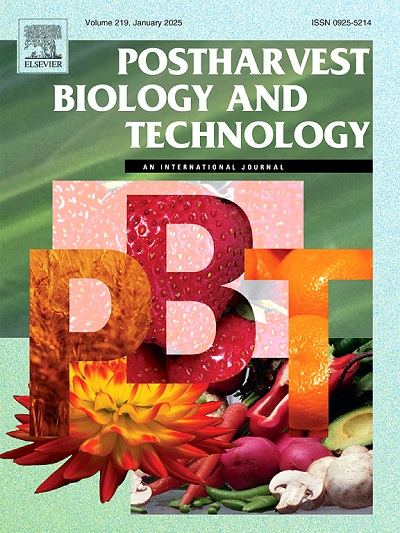Dielectric barrier discharge enhances ethylene decomposition and delays tomato fruit ripening during storage by cold atmospheric plasma
IF 6.4
1区 农林科学
Q1 AGRONOMY
引用次数: 0
Abstract
Although the application of cold atmospheric plasma (CAP) technology in the preservation of fruits has attracted much attention, the effect is limited because CAP generator is commonly designed to reduce microbial contaminations, instead of destroy ethylene. This work was aimed to develop a dielectric barrier discharge (DBD) technique to generate CAP, directly based on the evaluation of the effects of different discharge factors of DBD device on the decomposition of ethylene. The results showed that CAP (quantitatively indicated with ozone and nitrogen oxides) was rapidly generated and ethylene was effectively decomposed by the existing DBD reaction device, with discharge voltage 25 kV, input frequency 8 kHz, electrode gap 4 mm, dielectric thickness 2 mm, and equipped with a heat-resistant ceramic plate used as the dielectric material under normal atmospheric conditions. The decomposition rate of ethylene reached more than 90 % after 4 min of treatment with CAP generated by DBD, and completely 100 % after 6 min, whether high or low initial concentration of ethylene at the beginning of CAP generation. Moreover, the CAP treatments both high- and low- intensity generated by the DBD device effectively suppressed ethylene production, delayed the color change of green ripe tomatoes and the decrease in fruit hardness during storage. In conclusion, the optimization of the design of DBD device according to its capacity of decomposing ethylene provided an alternative approach to enhance effect of CAP on fruit preservation.
低温大气等离子体贮藏过程中,介质阻挡放电促进乙烯分解,延缓番茄果实成熟
低温常压等离子体(CAP)技术在水果保鲜中的应用备受关注,但由于CAP发生器通常设计为减少微生物污染,而不是破坏乙烯,因此其效果有限。本工作旨在直接在评价介质阻挡放电装置不同放电因素对乙烯分解影响的基础上,开发一种产生CAP的介质阻挡放电(DBD)技术。结果表明:现有的DBD反应装置在常压条件下,放电电压为25 kV,输入频率为8 kHz,电极间隙为4 mm,介电厚度为2 mm,可快速生成CAP(以臭氧和氮氧化物定量表示),并能有效分解乙烯。用DBD生成的CAP处理4 min后,乙烯的分解率达到90 %以上,6 min后,无论初始浓度高还是低,乙烯的分解率都达到100% %。此外,由DBD装置产生的高、低强度CAP处理均能有效抑制青熟番茄乙烯的产生,延缓青熟番茄贮藏过程中颜色的变化和果实硬度的降低。综上所述,根据其分解乙烯的能力对DBD装置进行优化设计,为提高CAP对水果保鲜效果提供了另一种途径。
本文章由计算机程序翻译,如有差异,请以英文原文为准。
求助全文
约1分钟内获得全文
求助全文
来源期刊

Postharvest Biology and Technology
农林科学-农艺学
CiteScore
12.00
自引率
11.40%
发文量
309
审稿时长
38 days
期刊介绍:
The journal is devoted exclusively to the publication of original papers, review articles and frontiers articles on biological and technological postharvest research. This includes the areas of postharvest storage, treatments and underpinning mechanisms, quality evaluation, packaging, handling and distribution of fresh horticultural crops including fruit, vegetables, flowers and nuts, but excluding grains, seeds and forages.
Papers reporting novel insights from fundamental and interdisciplinary research will be particularly encouraged. These disciplines include systems biology, bioinformatics, entomology, plant physiology, plant pathology, (bio)chemistry, engineering, modelling, and technologies for nondestructive testing.
Manuscripts on fresh food crops that will be further processed after postharvest storage, or on food processes beyond refrigeration, packaging and minimal processing will not be considered.
 求助内容:
求助内容: 应助结果提醒方式:
应助结果提醒方式:


